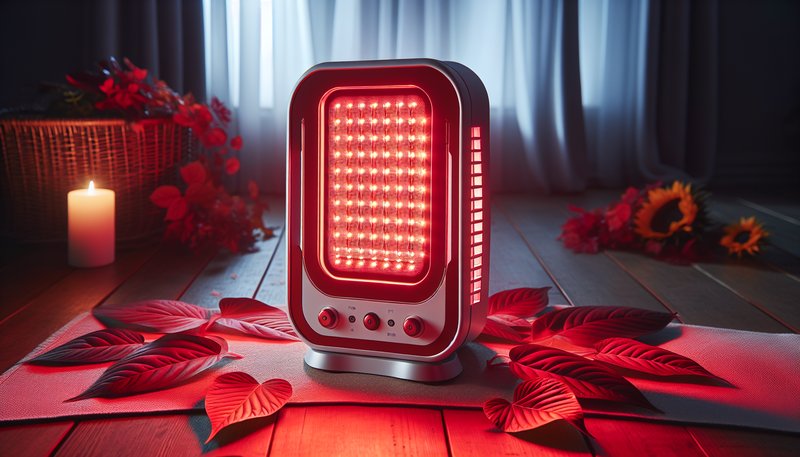Does Red Light Therapy Cause Dark Spots?
Does Red Light Therapy Cause Dark Spots?
Are you considering red light therapy for skin rejuvenation but worried it might lead to dark spots? You’re not alone. Many people are intrigued by the potential benefits of red light therapy but have concerns about its effects on the skin, particularly the possibility of developing dark spots.
This article will explore red light therapy, its benefits, potential side effects, and whether it can cause dark spots on the skin. We aim to provide a comprehensive overview to help you make informed decisions about this emerging treatment.
Find out the specifics in Red Light Therapy for Eyes
Key Takeaways
- Red light therapy is generally considered safe and beneficial for skin health.
- Under certain conditions, red light therapy can potentially lead to pigmentation changes in some individuals.
- Proper usage, skin type considerations, and professional guidance are essential for minimizing risks associated with red light therapy.
What is Red Light Therapy?
Red light therapy (RLT) is a non-invasive treatment that uses low-level wavelengths of red light—typically between 600 and 650 nanometers—to penetrate the skin and stimulate cellular processes. This therapy has gained popularity in recent years for its purported benefits in skin health, such as reducing wrinkles, improving skin tone, and accelerating healing.
RLT works by stimulating the mitochondria in cells, enhancing their energy production. This increased energy can lead to improved cell repair and regeneration, making it a sought-after option in dermatology and aesthetic treatments.
What are the Benefits of Red Light Therapy?
Red light therapy offers several advantages that contribute to its growing popularity in skin care.
Cell Regeneration
RLT accelerates the healing process of skin cells, making it effective for treating wounds, acne scars, and other skin imperfections. Users often report improved skin texture and reduced visibility of scars following treatment.
Wrinkle Reduction
Red light therapy has been shown to stimulate collagen production, which helps reduce fine lines and wrinkles. Clinical studies have demonstrated noticeable improvements in skin firmness and elasticity with regular treatment.
Improved Skin Tone
RLT can enhance circulation and oxygenation of the skin, leading to a more vibrant and even skin tone. Many users experience a reduction in redness and hyperpigmentation, giving a more balanced appearance.
Faster Physical Recovery
Beyond aesthetic benefits, red light therapy has been found to aid in muscle recovery and alleviate joint pain, demonstrating its versatility as a therapeutic tool.
Is it Possible to Develop Dark Spots from Red Light Therapy?
While red light therapy is predominantly seen as beneficial for the skin, there are instances where it can lead to skin pigmentation changes, including dark spots. This risk can be heightened by certain factors.
What are the Advantages of Professional Treatment?
Opting for professional red light therapy sessions over at-home devices can offer several advantages:
- Tailored Treatments: Professionals can customize treatments to suit individual skin types and conditions, minimizing risks associated with improper use.
- Enhanced Safety: Conducting sessions in a controlled environment helps reduce chances of overexposure, which could lead to adverse effects like dark spots.
- Skillful Technique: Trained professionals can monitor skin responses closely, making adjustments as needed during the session.
What are the Disadvantages of At-Home Treatments?
At-home devices may pose some challenges:
- User Error: Lack of guidance can lead to improper use, including exposure times that are too long or too frequent.
- Inconsistent Results: Home devices may not provide the same intensity and quality of treatment as professional equipment, potentially impacting efficacy.
- Higher Risk of Side Effects: Without expert oversight, users might inadvertently increase their risk of pigmentation changes, including dark spots.
What are the Things to Consider Before Trying Red Light Therapy?
Considering red light therapy requires thoughtful deliberation. Here are vital factors to keep in mind.
Skin Type Considerations
Individuals with darker skin tones may be more susceptible to post-inflammatory hyperpigmentation, especially if there is a history of skin sensitivity. Consulting with a dermatologist prior to starting therapy is advisable.
Pre-existing Conditions
Those with existing skin conditions or a history of pigmentation issues should seek professional guidance. Underlying issues could exacerbate the effects of red light therapy.
Treatment Frequency
Overuse of red light therapy can lead to adverse side effects, including potential dark spots. It’s essential to adhere to recommended treatment frequencies to minimize risks.
Individual Reactions
Every individual’s skin reacts differently to various treatments. Performing a patch test before larger sessions can help gauge skin response without risking widespread issues.
What are the Alternatives to Red Light Therapy?
If you’re uncertain about red light therapy or concerned about potential side effects, there are several alternative treatments available.
Topical Treatments
Many individuals opt for topical products rich in retinoids, vitamin C, and hyaluronic acid. These ingredients promote cell renewal and improve skin elasticity without the risks associated with light therapy.
Chemical Peels
Chemical peels involve the application of a solution to exfoliate layers of skin, promoting brighter and more even skin. They can be tailored to address specific concerns and skin types.
See why in Can Red Light Therapy Tan You?
Microdermabrasion
This physical exfoliation treatment removes dead skin cells, improving skin texture and tone. It is a non-invasive option that typically involves minimal downtime.
Laser Treatments
For more severe skin issues like dark spots, laser treatments offer targeted solutions. These procedures can help reduce pigmentation and rejuvenate the skin effectively.
Conclusion: Is it Recommended to Pursue Red Light Therapy?
Red light therapy has numerous benefits, ranging from skin rejuvenation to healing properties. While there is a potential risk for dark spots, particularly in sensitive individuals or those with pre-existing conditions, proper care and professional guidance can significantly mitigate these risks. Consulting a dermatologist to tailor the approach to your skin type and condition can provide the best outcome.
Frequently Asked Questions
Can everyone use red light therapy?
While RLT is generally safe for most people, individuals with specific skin conditions, sensitivities, or darker skin tones should consult a healthcare professional before starting treatment.
How often should I undergo red light therapy?
Treatment frequency can vary depending on your skin type and concerns, but typically sessions range from 2 to 5 times a week initially, tapering off as needed. Always follow the guidance of a professional.
Are there side effects to red light therapy?
Side effects are rare but can include temporary redness, irritation, or, in some cases, pigmentation changes like dark spots. Monitoring your skin’s response is essential.
How soon can I expect results from red light therapy?
Many users start to see improvements within 2 to 4 weeks of regular treatments, while more significant changes may become noticeable over a few months.
Is red light therapy safe for all skin tones?
Though safe for most, individuals with darker skin tones should approach with caution due to heightened pigmentation risks. Professional advice is recommended.
By understanding the implications and recommendations related to red light therapy, you can make informed choices about enhancing your skin health safely and effectively.






